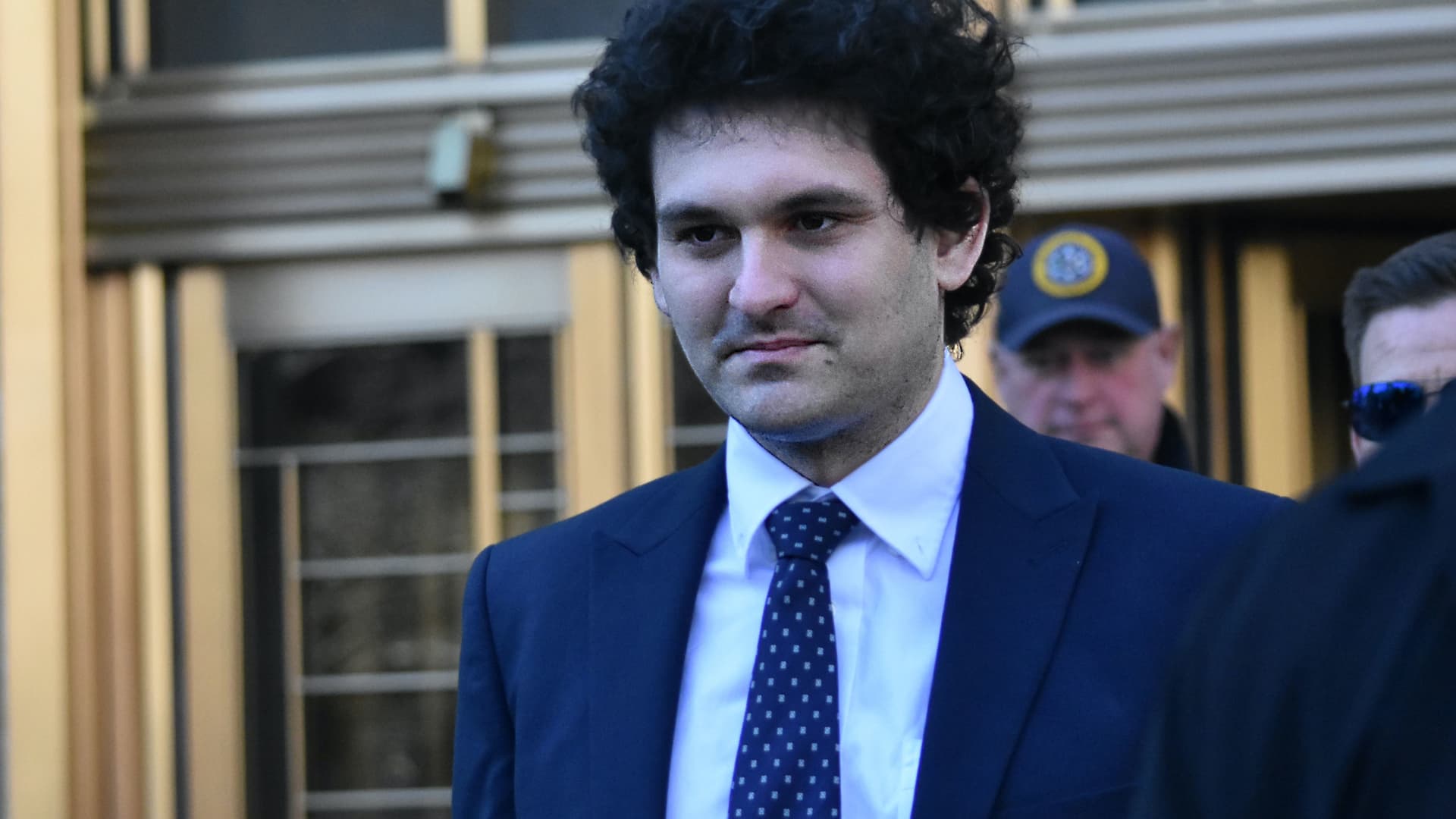FTX founder Sam Bankman-Fried resumed his testimony on Monday, and used his time on the stand to blame his former close friends and colleagues for the downfall of his crypto empire.
As his criminal fraud trial enters what’s expected to be its last week, Bankman-Fried is trying to undermine the prosecution’s key witnesses, who placed the FTX founder at the center of the crypto exchange’s misuse of customer funds and its ultimate demise.
Bankman-Fried, 31, faces a potential life sentence if convicted of fraud charges stemming from the collapse in November of FTX and sister hedge fund Alameda Research. He has pleaded not guilty.
On Monday, Mark Cohen, Bankman-Fried’s lead defense attorney, allowed his client to take aim at Caroline Ellison, who ran Alameda and is also Bankman-Fried’s ex-girlfriend. The primary theme was Bankman-Fried’s concern, expressed in conversations between June and September 2022, about whether Alameda was properly hedged given the crash in crypto prices. He said he was notably concerned about the decline in Alameda’s net asset value from $40 billion the prior year to $10 billion.
The market had already dropped 70% and if it fell another 50%, he was afraid the firm would be insolvent, Bankman-Fried told the jury.
“She started crying,” Bankman-Fried said, regarding Ellison’s reaction when he told her that. “She agreed.”
Ellison, who took a plea deal and is cooperating with the government, also said Alameda shouldn’t have made some venture investments, Bankman-Fried testified. He said she offered to step down and said he told her that this wasn’t about blame or past failures, but that Alameda should urgently be putting on hedges. He said he hadn’t intended for her to resign.
In September, he checked in again with Ellison about the hedging activity, Bankman-Fried testified. She said Alameda had hedged. He asked about the scale of the trades and said his instinct was that they could have been twice the size. After Ellison sent him spreadsheets about the trades, she agreed there was more room to hedge and she did so, Bankman-Fried said.
Bankman-Fried’s testimony on Monday follows his initial appearance on the stand at the end of last week. He told jurors then that he didn’t commit fraud, and that he thought the crypto exchange’s outside expenditures, like paying for the naming rights at a sports arena and its venture investments, came out of company profits.
The majority of the four-week trial so far has been highlighted by prosecutors walking former leaders of Bankman-Fried’s businesses through specific actions taken by their boss that resulted in clients losing billions of dollars last year. Several of the witnesses have pleaded guilty to multiple charges and are cooperating with the government.
Bad hedging, troubled personal loans
As questioning continued on Monday, Bankman-Fried said his analysis suggested that net asset value at Alameda was still $10 billion.
The defense then walked Bankman-Fried through activities from Nov. 1 to Nov. 11, covering the period of FTX’s rapid collapse and its immediate aftermath.
Bankman-Fried said Gary Wang, a co-founder who previously testified on behalf of the prosecution, told him that the backlog of withdrawal demands had to do with a backlog of bitcoin withdrawals and that he was making a fix in the code.
FTX’s engineering director Nishad Singh, who was also called as a government witness, had a problematic personal financial situation, Bankman-Fried testified. He said Singh was suicidal and had a therapist on call 24/7 to watch over him. Bankman-Fried said he was trying to comfort him about his loans and expenses and to prevent him from hurting himself.
Bankman-Fried then blamed Can Sun, who was FTX’s general counsel. He said they had a talk before Bankman-Fried’s follow-up call with investment fund Apollo. The spreadsheet provided to Apollo did have the $8 billion liability included, Bankman-Fried said. He told the court that he spoke with Sun and told Apollo about his best understanding of the framework around the fiat account.
In describing the swift downfall of FTX, Bankman-Fried said that customer withdrawals had quickly increased from $50 million a day to $1 billion a day. He said it was like a run on the bank and he was very concerned since the only way to withdraw all customer funds was to liquidate every open margin trade.
Bankman-Fried defended his tweets that were designed to cool customer concerns.
Regarding the “assets are fine” tweet he wrote during the panic, he said he thought Alameda’s net asset value was roughly $10 billion and that FTX didn’t have a hole in its balance sheet.
“My view was the exchange was OK and there was no holes in the assets,” he told the court.
On Nov. 8, he realized that Alameda was going to need to be shut down. He had calls with potential investors to try and secure “significant” outside capital due to the run on FTX.
As the defense wraps up its questioning of Bankman-Fried, the focus will turn back to the prosecution. Renato Mariotti, a former prosecutor in the U.S. Justice Department’s Securities & Commodities Fraud Section and now a trial partner in Chicago with Bryan Cave Leighton Paisner, said he expects the cross-examination to be “devastating given SBF’s frequent prior statements about the issues in the case.”
“What we’ve heard so far has been the direct examination — the defense telling its story,” Mariotti told CNBC. “There were no big twists or shockers. The defense doesn’t appear to have an ace up its sleeve.”
If you are having suicidal thoughts or are in distress, contact the Suicide & Crisis Lifeline at 988 for support and assistance from a trained counselor.
— CNBC’s Dawn Giel contributed to this report
